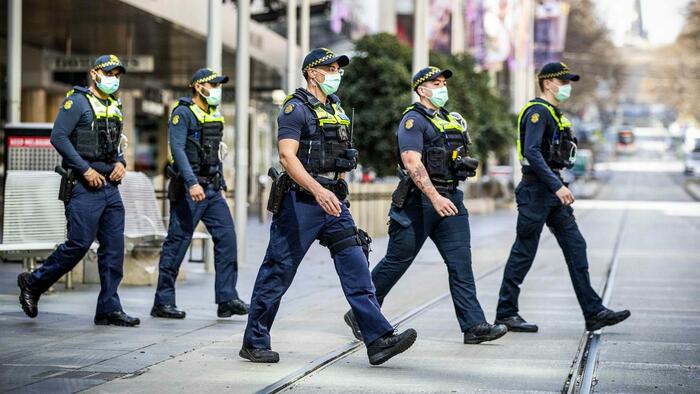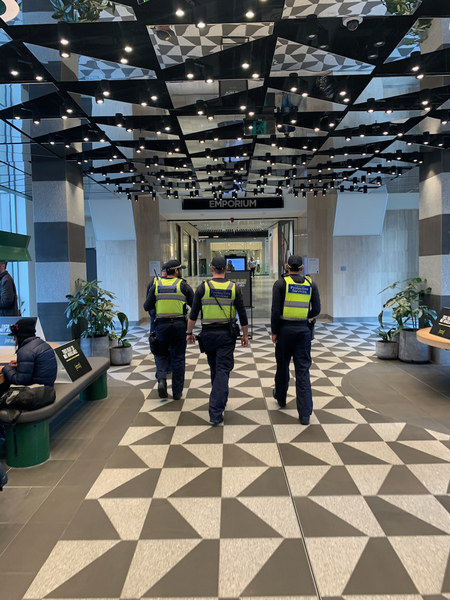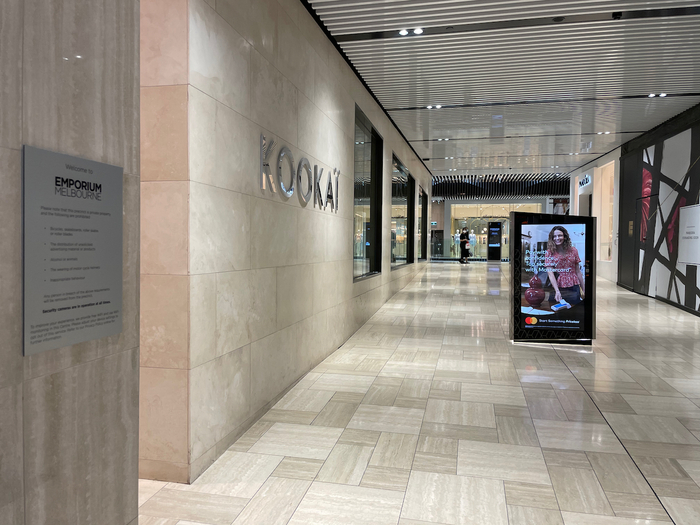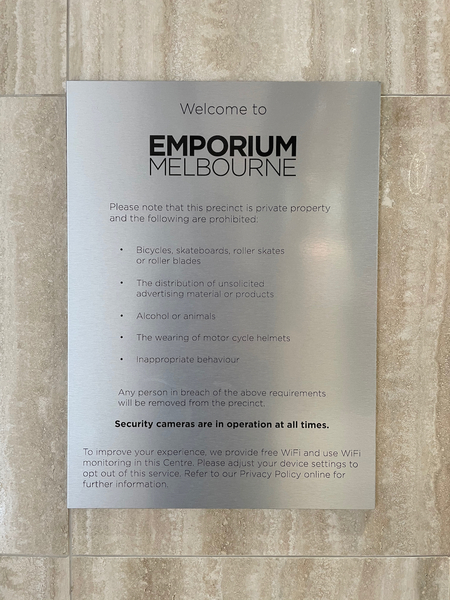Dave McDonald
March 2021
Law enforcement and public health share a complex and multifaceted relationship. Police have long played a central role across diverse sites ranging from infectious diseases like HIV and hepatitis, mental illness, drugs and alcohol, sex work, and family violence. In the context of COVID-19 however, their public health role has drawn unprecedented attention. In jurisdictions like Australia, the invocation of a state of emergency grants police a prominent role in the enforcement of public health orders. This has been particularly significant in Victoria, which was distinguished from other states and territories by a major second wave of COVID-19. Further differentiating the Victorian response has been its use of Protective Services Officers (PSOs). While PSOs have been used in a very limited way in some jurisdictions to provide security services, they have assumed a much larger role in Victoria over the last decade. This intensified even further in 2020 when COVID-19 was used as a pretence for the expansion of their deployment. In this piece, I take my cue from this development to consider how this model of policing – predominantly concerned with minor offences and incivilities – has been expanded in Victoria and how it raises broader issues about security as a form of infrastructure. These issues include how distinctions between public and private are employed and redefined to justify the expansion of policing and its powers.

A Short History of PSOs
PSOs were first introduced in Victoria in 1987 when a small number were appointed to provide security for people holding senior public office and at sites of public importance. This largely translated into security at locations like Parliament House and the Shrine of Remembrance, and mirrors how PSOs continue to have been used by the Australian Federal Police and the former Australian Protective Service. In accordance with this original function, few citizens encountered PSOs on a regular basis. But this changed dramatically with the 2010 Victorian state election, when a conservative Liberal/National Party Coalition government led by Ted Baillieu was elected, having committed to introduce PSOs to the rail network. The Justice Legislation Amendment (Protective Services Officers) Bill was enacted in 2011 and saw PSOs placed at every metropolitan railway station in Melbourne between 6pm and final trains daily, and at the regional stations of Ballarat, Bendigo, and Geelong.
On a superficial level, the 2011 reforms sought to maintain a meaningful distinction between PSOs and police. For example, while police may use their powers at any time irrespective of whether they are on duty, PSO use of powers were limited to ‘designated places’ while an officer is on duty. Designated places comprised railway and associated premises such as adjoining carparks, bus stops, and thoroughfares. Similarly, under the Victoria Police Act 2013, the function of PSOs was limited to the provision of public safety, whereas police are charged with more diverse functions relating to the prevention and detection of crime. However, these distinctions belie the much more substantive transformation that was inaugurated by the Baillieu government’s changes. Specifically, by replacing the original security function of PSOs with a renewed responsibility for combating crime and antisocial behaviour, the effect has been to establish PSOs as second-tier police.

In this way, PSOs have formed part of a punitive strategy in response to crime and incivilities. For example, in the context of the 2010 state election PSOs were promised as one component of a zero-tolerance approach to crime, encompassing the abolition of suspended sentences and the construction of new prisons. There was nothing novel about this: zero-tolerance has become a hallmark of late modern criminal justice throughout much of the western world in the wake of James Q. Wilson and George L. Kelling’s (1982) ‘broken windows’ thesis, exemplified in particular by a punitive and non-discretionary approach to minor street-based offending. This alignment between penal populism and the new punitiveness resembles a broader phenomenon that the criminologist Jonathan Simon (2006) has evocatively described as ‘governing through crime’. In this respect, the expansion of PSOs across the rail network was merely one step in a much longer, global trajectory.
The resemblance between PSOs and police is both aesthetic and instrumental. To an untrained eye, they look almost identical. Their powers, derived from both common law and the Victoria Police Act 2013, enable PSOs to carry firearms, arrest and detain people, request personal information, search people and their property, and issue infringement notices, fines and official warnings. However, whereas police recruits receive 31 weeks of structured training, training for PSOs lasts 12 weeks. Such were the proposed powers of PSOs that when the legislation was debated in 2011, the Law Institute of Victoria described them as ‘frighteningly broad’, warning that they would increase the risk of shootings against young people or those with a mental illness (Counsel 2011).
Giving weight to these concerns was a review by the Independent Broad-based Anticorruption Commission (IBAC 2016) into oversight of police corruption and misconduct in Victoria. This review identified numerous risks related to PSOs, including assault and improper use of force, authorised access and disclosure of information, and predatory behaviour towards the public. Of particular concern was the fact that these risks are disproportionately experienced by people who are already marginalised and subject to police surveillance and intervention, such as Indigenous people, those from racial and ethnic minorities more generally, homeless people, those experiencing mental illness, and young people. Yet despite the risks identified by IBAC, Victoria’s anticorruption landscape is anything but robust, with IBAC itself having been widely criticised in terms of its limited capacity to offer effective oversight (O’Brien Butler 2018). While it has not delayed the legislative expansion of PSOs, the inadequacy of this oversight is something even the Victorian Parliament has recognised (see Independent Broad-based Anticorruption Commission Committee 2016).
PSOs and the New COVID Normal
The way that PSOs have come to assume a central role in Victoria’s social control infrastructure is concerning in its own right, but this is reinforced by changes justified by COVID-19. When the Baillieu government initially committed to deploying PSOs at every train station after 6pm, even senior police baulked at the logistical consequences. Employing the language of neoliberal managerialism, there was nothing ‘strategic’ about such a use of resources. However, less than a decade later in the context of COVID-19, an altogether different consensus regarding PSOs has emerged. Public transport patronage dropped abruptly as a result of public health restrictions. This provided an opportunity for a withdrawal or at least reduction of PSOs. Instead, the Victorian ALP government was persuaded to revise the mandate of PSOs beyond the rail network.

Legitimised on the pretence of public health, this was achieved by redefining the meaning of a designated place. In comparison to the original definition which encompassed railway premises and their surrounds, the term was altered to include the entire metropolitan Melbourne area, and the municipal districts of regional areas in Victoria. This jurisdictional redefinition had the effect of enabling PSOs to patrol crowded places like major shopping centres and other commercial precincts. As the Police Minister, Lisa Neville, said of the changes, ‘we’re delivering a flexible and skilled PSO workforce and are looking to enable police to deploy PSOs to more locations – including shopping centres, major events and major emergencies – while maintaining safety on public transport.’
This short history of PSOs dating back to the 2010 Victorian election demonstrates how rapidly they have been incorporated into the status quo of maintaining social order. Despite this, these developments provide an opportunity to consider the sorts of interests that are – and are not – being served by PSOs. IBAC’s (2016) report into corruption and misconduct risks provided some insight into this. Similarly, the Victorian Auditor General has sought to clarify the extent to which PSOs are effective in terms of reducing crime and increasing perceptions of public safety (Victorian Auditor General’s Office 2016). This report found that while there is some evidence that PSOs have increased perceptions of safety across the rail network at night, whether this impacts crime is a more difficult proposition to ascertain.

However, these are not the only ways of assessing the effectiveness or desirability of PSOs. At stake in their progressive expansion is a political question about what it means to manage crime and antisocial behaviour through a second-tier policing regime. After all, available to PSOs is the full continuum of force that police may use, with just a fraction of the training. In the context of successive Aboriginal deaths in custody that have raised questions about the conduct of police, these questions are even more pressing. Indeed, at the very same time that Black Lives Matter reached a new crescendo as a global movement in response to structural police violence, PSOs were being moved further across spaces of daily life in Victoria under the pretence of public health.
Beyond the use of force, there are further reasons to be concerned about PSOs and the powers they have at their disposal. In the context of COVID-19, renewed attention has been brought to bear upon infringement notices as a technique of policing. While this attention is to be welcomed, it has tended not to extend to fines as a policing strategy outside of COVID-19. Further, in the wake of their dispersal across commercial sites like shopping centres, it is opportune to ask what it means to use state policing resources in such a way.
PSOs and Mass Private Property
When the Victorian government announced it was changing its definition of designated places, the chief executive of the Shopping Centre Council of Australia responded by saying ‘the visible presence of PSOs in shopping centres during COVID-19 has been incredibly positive for community assurance and safety, and we strongly support their presence and engagement in the long term.’ While it is unsurprising that commercial interests would enthusiastically welcome uniformed state actors providing security within these domains, whether public resources should be used in this way is an altogether different question.
Shopping centres, or malls, give the appearance of being public by virtue of the fact that they are open to large volumes of the population. However, this appearance disguises a more complex reality. In comparison to high streets, for example, shopping centres are privately owned and managed. The private ownership of shopping centres has led Clifford Shearing and Philip Stenning (1981) to call such places ‘mass private property’, a designation that connects to a larger interest among policing scholars around the blurring between public and private. As David Bayley and Clifford Shearing (2001) have argued, ‘gradually, almost imperceptibly, policing has been “multilateralised”: a host of non-government groups have assumed their own responsibility for their own protection, and a host of nongovernment agencies have undertaken to provide security services’ (1).


Among policing scholars, the advent of mass private property raises questions about policing functions delivered by private actors. One of the most iconic examples of this also comes from Shearing and Stenning (1985), in the form of their analysis of Disneyworld as a site of consensual control. As they demonstrate, places like Disneyworld may seem to run like clockwork, but underpinning them are pervasive systems of regulation. The same is true of shopping centres, which are exemplary in terms of their status as sites of late modern consumption.
What does it mean to expand the jurisdiction of PSOs to include sites like private shopping centres? In part, this conveys that despite a tendency to conceive of these spaces as public, and hence accessible to all people, appearances may mislead. More than this, however, it raises a broader question about whose interests are served by the provision of PSOs to these sites. In the 1980s, when policing scholars began to interrogate mass private spaces, what concerned them was the rise in private actors who were being deployed to provide policing services, and what this meant for the future of state or public policing more generally.
The ongoing expansion in PSOs that I have charted tells a slightly different, but equally concerning story. State, or public, police have not disappeared from these mass private spaces, which also regularly employ private security guards. But in Victoria, state-funded policy has proliferated in these spaces in the form of PSOs. This has occurred without public debate about the consequences of deploying public police resources to private domains like shopping centres, and the kinds of interests that are served by this development. This is despite ongoing concerns about the reach of powers available to PSOs, and the lack of training to ensure they use those powers appropriately. Despite these concerns, one thing is certain: private shopping centre management seem happy.
Works Cited
Bayley, David H. and Shearing, Clifford D. 2001. The New Structure of Policing: Description, Conceptualisation and Research Agenda. Washington DC: National Institute of Justice.
Counsel, Caroline. 2011. Powers for PSOs Frightening. 19 August. Law Institute of Victoria.
Independent Broad-based Anticorruption Commission. 2016. Transit Protective Services Officers: An Exploration of Corruption and Misconduct Risks. Victoria: Victorian Government Printer.
Independent Broad-based Anticorruption Commission Committee. 2018. Inquiry into the External Oversight of Police Corruption and Misconduct in Victoria. Victoria: Victorian Government Printer
O’Brien Butler, Sinead. 2018. ‘Policing the Police: Independent Investigations for Victoria’. University of New South Wales Law Journal, 41 (3): 702-745.
Shearing, Clifford D. and Stenning, Philip C. 1981. ‘Modern Private Security: Its Growth and Implications’. In M. Tonry and N. Morris (eds). Crime and Justice: An Annual Review of Research, 193-245. Vol. 3. Chicago: University of Chicago Press.
Shearing, Clifford D. & Stenning, Philip C. 1985. ‘From the Panopticon to Disney World: The Development of Discipline’. In Anthony N. Doob and Edward L. Greenspan (eds) Perspectives in Criminal Law, 335-349. Aurora: Canada Law Books.
Simon, Jonathan. 2006. Governing Through Crime: How the War on Crime Transformed American Democracy and Created a Culture of Fear. Oxford: Oxford University Press.
Parliament of Victoria. 2011. Legislative Assembly Parliamentary Debates. 29 June. Victoria: Victorian Government Printer.
Victorian Auditor General’s Office. 2016. Public Safety on Victoria’s Train System. Victoria: Victorian Government Printer.
Wilson. James Q. and Kelling, George L. 1982. ‘Broken Windows: The Police and Neighbourhood Safety.’ March. The Atlantic.